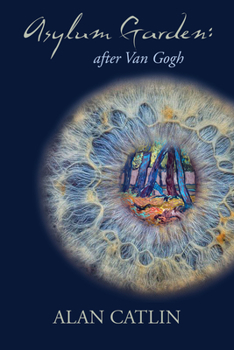Asylum Garden: - after Van Gogh
Asylum Garden - after Van Gogh is a book about seeing: what we see and how we see it. The collection begins with the artist, Van Gogh, during his rest cure at an asylum following a general emotional and physical collapse. He begins to paint landscapes, gardens, peaceful scenes, gradually internalizing what he sees. Upon his release, his vision incorporates a whole new way of seeing: slightly altered landscapes and nightscapes, everything off-center, self-portraits showing a more fraught, perhaps demented, personality. Everything he does, is emotionally charged and completely unique.
As the word asylum implies, where the artist resides, is a place of refuge for the artist but it is also an institution. A mental institution, with all its particular sets of rules, regulations, and treatments may range from the well-meaning, but often unintentionally cruel, to a place of outright torture. The artist is at rest, the artist is tormented. Then the artist dies.
A peaceful, elegiac scene, in an-inspired-by-Whistler poem, opens a door to another place. The artist undergoes a transmigration of the mind to where there is life in death, and death in life. The later poems become a broad visualization, a verbal journey through a perplexing world of the deep relationships between art and madness, life in death.
A peaceful winter scene becomes an elegy, death is a direction, art is the tool of the imagination that takes you from familiar places to those places deep inside. The non-existent photographs direct the reader to see things that appear on the paper but exist only in the mind. Later, actual photographs key responses that take you to particular places: times of upheaval and strife. We move through time and space, a time of revolution, chaos, assassination and radical politics, to where we live now, on the edge, where art and madness, life and death, meet, in the imagination.





